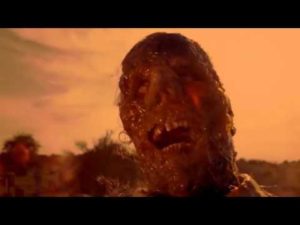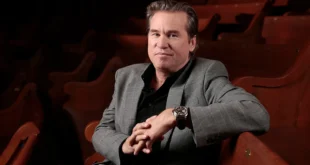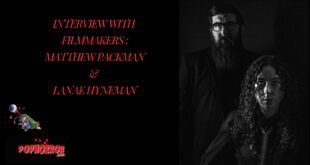You Like Head Cheese?
It’s Tobe Hooper’s 75th birthday on January 25th, so it’s a great time to look at his huge impact on horror.
First, I feel a preface is in order: although horror fans are often quite cheerful, they’ve had plenty of reasons to be sad lately. How to say this tactfully? Many horror directors, writers and actors are kicking the bucket. In addition to Wes Craven’s death in 2015, we recently lost George A. Romero, William Peter Blatty, John Hurt, Bill Paxton, Jonathan Demme and, yes, the highly influential Tobe Hooper.
So, the obvious question is: Where would horror be without these people, especially the great Tobe Hooper? Obviously, the influence of The Texas Chain Saw Massacre could hardly be overstated. In that movie alone, there is a great balance of depth and simplicity — like stark reality blended with a crazed, outlandish nightmare.

I would say every part of TCM hints at the inevitability of some sinister future — both for the ill-fated, quasi-hippie kids and for people in general. Yet, at the same time, the movie never completely spells out why evil awaits. The audience is left grasping for explanations, with only tenuous strands of supporting evidence available. That is a huge part of the horror, and why The Texas Chain Saw Massacre works.
The opening cemetery scene is itself monumental, with a grisly work of art featuring decomposed bodies exposed in daylight, plain for all to see. The suggestion is that physical, mental and moral decay can be found anywhere, even if you’re not looking. And, although Leatherface is the film’s essential mascot, the Hitchhiker scene ought to disturb anybody with good taste, especially for its authenticity. It is also an oddly humorous scene, which only lends to its realism.
Think of it this way: If a demented hitchhiker really did get picked up, couldn’t you imagine something very much like that scene? I could. So, it becomes oddly relatable to the unhinged personalities we’ve probably encountered in our own lives. That’s real horror, folks, and partly why this movie’s still critically acclaimed.
Tobe’s Other Creations

Of course, The Texas Chain Saw Massacre isn’t Hooper’s only creation. You also have key movies like Salem’s Lot, The Funhouse, Poltergeist, Lifeforce and Texas Chainsaw Massacre 2, among many others. I personally like all of them, for various reasons. For example, when that vampire kid taps on Mark’s bedroom window in Salem’s Lot, it has the feel of a genuine nightmare. Goddamn, is that creepy!
Meanwhile, Texas Chainsaw Massacre 2 functions simply as a wild ride (although not everyone loved it). And, even though some claim Poltergeist is more about Spielberg, it undeniably has some of Hooper’s distinct horror touches.
Last but not least, I’d like to mention one of Hooper’s lesser-known projects: The “No More Mr. Nice Guy” episode of Freddy’s Nightmares. Why am I mentioning this? Well, in a show that was rarely ever scary (and that, frankly, cornered Freddy Krueger into self-parody), this premiere episode had a considerably scarier and more downright menacing tone. Putting yourself in the story, you could really understand the threat the character posed, and why he became a horror icon to begin with. In a way, it was a back-to-basics approach to the character, and Hooper obviously did his best to give the episode its best possible impact.
In a way, that’s all one could ask for in a horror director. Not everyone is going to love or respect the result, and that’s the curse of being a creative person. However, Tobe Hooper clearly knew what he was doing and how to do it. He was, in fact, a professional artist, and remains one of horror’s great creators. In short: He’s made some good stuff. Happy birthday, sir.

 PopHorror Let's Get Scared
PopHorror Let's Get Scared



